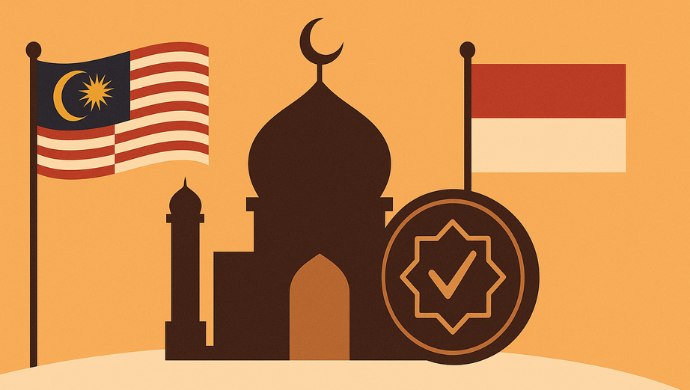The Transformation of the Singapore BaaS Industry
“audax offers a modular and API-driven platform, empowering banks, FinTechs, and businesses beyond the financial services industry to seamlessly embed banking services into their own products and ecosystems.” – Dewi Rengganis, Senior Industry Analyst

The latest Frost & Sullivan analysis indicates that the Asia-Pacific BaaS market size is forecast to achieve rapid growth, with a compound annual growth rate of 21.7% between 2024 and 2030, and is on track to reach $20.6 billion by 2030.1 The Asia-Pacific is the world’s fastest-growing market in BaaS and embedded payments, with Singapore at the forefront of FinTech innovation due to its favorable digital financial services policies, established financial services landscape, and high internet penetration rate of 98% in 2025. Frost & Sullivan expects BaaS and payment service providers to focus on consolidating their operating footprint, especially in emerging Asia-Pacific markets. The Asia-Pacific-first strategic approach, buoyed by key factors such as the FinTech ecosystem in these countries, presents a greenfield for expansion. The adoption of digital technologies, combined with the demand for accessible financial services, creates growth opportunities.
Market Disruption and Market Gaps
“audax’s platform enables banks and financial institutions to launch new digital banking business models, from building digital banks to enabling Banking-as-a-Service offerings, all while modernising without disrupting existing systems.” – Dewi Rengganis, Senior Industry AnalystFounded in 2023 and headquartered in Singapore, audax is a FinTech company backed by Standard Chartered, transforming how digital banking is built and scaled across Asia and the Middle East. Originally developed as an internal innovation within Standard Chartered (under the name SC nexus), audax was spun off by SC Ventures (Standard Chartered’s fintech and innovation arm) to operate as an independent entity.
audax offers a modern, end-to-end digital banking platform that enables banks and financial institutions to design and deploy new digital banking models – from launching standalone digital banks to embedded financial services within partner ecosystems. Its cloud-native, modular and core-agnostic architecture allows for rapid deployment, co-existence with legacy systems, and scalability across markets.
Built on the experience of powering Standard Chartered’s BaaS deployments in Asia, audax’s full-stack digitalisation capabilities allow clients to accelerate time-to-market, reduce operational complexity, and deliver superior user experiences. In Indonesia, audax enabled the launch of BukaTabungan, a fully digital banking service by Standard Chartered and Bukalapak that is embedded within the Bukalapak ecosystem. The initiative tripled the bank’s customer base within six months, with 98% of the users being new to bank.
With a proven track record in Southeast Asia, audax is now expanding into high-growth markets such as the Middle East. Its infrastructure is tailored for interoperability across complex core banking systems and ecosystem partners, helping institutions modernise, participate in open banking, and unlock new revenue models.
While traditional banks are constrained by legacy limitations, and many fintechs struggle with integration and scale, audax bridges the gap – offering a compliant, scalable, and core-agnostic platform purpose-built for digital banking at speed and scale.
Passionate Persistence and Competitive Differentiator
audax’s transformative technology is the result of relentless innovation and a clear-eyed focus on modernising digital banking from the ground up. Its digital banking platform is designed to eliminate the inefficiencies of legacy infrastructure, such as integration complexities, legacy system dependencies, and substantial upfront costs, enabling clients to operate more efficiently and accelerate time-to-market.This plug-and-play capability is a critical competitive differentiator. Unlike many emerging digital banking solutions that require heavy customisation or internal development, audax provides an infrastructure-agnostic platform that seamlessly integrates into existing environments.
To deliver even greater value, audax partners with best-in-class technology providers, such as FPT, Paymentology and AWS, to complement its digital banking platform with capabilities like payments processing and cloud infrastructure. These strategic collaborations enhance delivery and go-to-market, enabling a more holistic and integrated digital banking experience.
audax’s flexible, future-ready approach resonates with forward-looking institutions seeking sustainable digital banking transformation – reinforcing its position at the forefront of next-generation digital banking and BaaS innovation.
Brand Equity and Customer Ownership Experience
audax’s success in enhancing brand equity and deepening customer ownership experience is demonstrated through its strategic deployments with top-tier institutions, such as Standard Chartered in Indonesia, Maybank Islamic (a Malaysian Tier 1 bank), and Jeel by Riyad Bank in Saudi Arabia. The launch of BukaTabungan, a fully digital banking service by Standard Chartered embedded within the Bukalapak ecosystem, perfectly illustrates audax’s ability to enable ecosystem-led distribution at scale. By embedding banking directly into Bukalapak’s highly engaged user base, audax helped Standard Chartered acquire customers at scale and significantly lower cost, achieving rapid market penetration in a cost-effective, fully digital manner.The speed and success of deployments like BukaTabungan stem from audax’s commitment to seamless ecosystem integration. By designing its platform for interoperability, audax enables banks to digitalise at pace – whether launching embedded finance propositions or full-stack digital banks.
With growing traction in Southeast Asia and the Middle East, audax is building a scalable digital blueprint for digital banking deployments, driving both its own growth and broader FinTech innovation in the regions.
Conclusion
Frost & Sullivan applauds audax’s unique ability to address critical market gaps by delivering a comprehensive digital banking solution that enhances scalability, flexibility, and adaptability to diverse markets, catering to the evolving needs of financial institutions.audax clearly differentiates itself through: i) Advanced, infrastructure-agnostic technology that modernizes legacy systems, ii) A commitment to customer-centric design and operational agility, and iii) Strategic partners that amplify the platform’s reach and impact. By enabling businesses to create new revenue streams, reduce complexity and adapt to changing market conditions, audax is redefining what’s possible in digital banking and embedded finance.
For its strong overall performance, audax earns Frost & Sullivan’s 2025 Singaporean Transformational Innovation Leadership Recognition in the Banking-as-a-Service industry.




